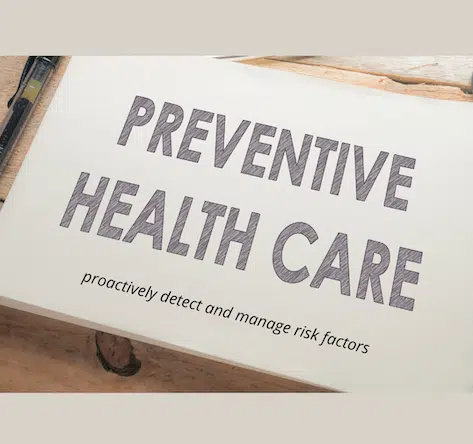Clearing Your Skin Naturally
Acne is one of the most common skin conditions, affecting nearly 85% of people at some point in their lives1. While conventional treatments often focus on topical solutions or antibiotics, naturopathic medicine takes a more holistic approach—seeking to understand and address the root causes of acne to promote long-term skin health and internal balance

What Is Acne?
Acne is a chronic inflammatory condition that primarily affects the face, back, chest, and shoulders. It arises when hair follicles become clogged with oil (sebum), dead skin cells, and bacteria, leading to whiteheads, blackheads, papules, pustules, or cysts.
But why does this happen? From a naturopathic standpoint, acne isn’t just a skin-deep issue—it often reflects deeper imbalances within the body. Let’s take a look at some of the root causes of acne.
Root Causes of Acne: A Naturopathic View
1.) Hormonal Imbalances
It is well known that high androgen levels, like testosterone, are strongly linked with increased sebum production and acne severity2. When hormones are imbalanced—as seen in puberty, menstruation, PCOS, or stress—sebaceous glands go into overdrive, creating acne lesions. Imbalanced estrogen-progesterone ratios, cortisol dysregulation and blood sugar imbalances can be the culprits leading to or exacerbating higher testosterone levels.
2.) Gut Dysbiosis and Digestive Health
The gut-skin axis is a vital communication pathway. An imbalanced microbiome and poor digestion can lead to increased intestinal permeability and inflammation that manifests on the skin. Not only can leaky gut syndrome increase systemic inflammation and burden the skin’s detox pathways, but it can also lead to food intolerances and a dysregulated immune system, both potentially causing acne and other skin concerns. Studies have also shown that acne sufferers often have higher levels of intestinal permeability and gut imbalances3.
3.) Diet and Blood Sugar Imbalance
Food is medicine. A diet high in sugar and processed foods increases insulin and IGF-1, which stimulate sebum production and keratinocyte proliferation. High glycemic, sugary foods, dairy, and processed products can trigger insulin spikes and inflammation, exacerbating acne. It has been shown that low-glycemic diets significantly reduce acne severity4, by reducing inflammation and blood sugar changes.
4.) Liver Detoxification Overload
The liver plays a key role in metabolizing hormones and toxins. When the liver is overwhelmed, these substances may be excreted through the skin, leading to breakouts. Supporting phase I and phase II liver detoxification helps the body process excess hormones and environmental toxins, therefore reducing outbreaks and clearing the skin.
5.) Chronic Inflammation and Immune Dysregulation
Acne is fundamentally an inflammatory condition. Chronic low-grade inflammation from food intolerances, environmental toxins, or stress can contribute to acne development. In fact, C-reactive protein (CRP), a marker of inflammation, is elevated in many people with acne5. In order to combat excess inflammation, it is important to adopt a more anti-inflammatory lifestyle, including an anti-inflammatory diet, regular exercise, detox practices such as sauna, choose to use clean products and get enough healthy sleep.
Naturopathic Treatment Strategies for Acne
Before any naturopathic medical treatment, it may be vitally important to assess for root cause imbalances using comprehensive lab testing. This helps to streamline the treatment approach by figuring out exactly where the imbalances lie, and where to implement changes. We can utilize comprehensive hormone testing, stool testing, food intolerance or allergy testing, inflammatory and blood sugar markers, and more. Your personal skin presentation and history will help to guide which labs and protocol will be most valuable.
- Balance Hormones Naturally
- Support adrenal health with adaptogens like ashwagandha and rhodiola. This will help to reduce cortisol and testosterone.
- Use seed cycling or chaste tree (Vitex agnus-castus) to support a regular menstrual cycle.
- Address insulin resistance with berberine or inositol, to reduce inflammation and testosterone dominance.

- Heal the Gut
- Incorporate probiotics (e.g., Lactobacillus rhamnosus and Bifidobacterium breve) to support a healthy and diverse microbiome.
- Eliminate food sensitivities—commonly dairy, gluten, or soy—through an elimination diet, which commonly cause inflammation and breakouts.
- Support the gut lining with L-glutamine, zinc carnosine, and slippery elm, which will reduce susceptibility to breakouts and reduce reactions to foods.
- Optimize Nutrition
- Follow a low-glycemic, anti-inflammatory diet rich in whole foods.
- Increase omega-3 intake through fish or flax oil to reduce inflammation and support the skin barrier,
- Ensure adequate zinc, vitamin A, and vitamin D levels—all essential for skin health6.

- Support Liver Detoxification
- Include cruciferous vegetables (e.g., broccoli, kale, Brussels sprouts) to aid estrogen metabolism.
- Use liver-supportive herbs like milk thistle and dandelion root, which will help to increase the metabolism of hormones and toxins through the liver, thereby reducing skin breakouts.
- Reduce Inflammation
- Use natural anti-inflammatories like curcumin and omega-3 fatty acids.
- Address underlying stress and encourage mindfulness practices.
- Topical Natural Remedies
- Choose products that have clean ingredients to reduce overall toxic load and skin reactions.
- Tea tree oil: Antimicrobial and anti-inflammatory.
- Green tea extract: Reduces sebum and bacterial colonization.
- Manuka honey: Wound healing and antibacterial.
Final Thoughts
From a naturopathic perspective, acne is a signal—not just a symptom. It’s the body’s way of communicating deeper imbalances that need to be addressed. When we listen to these messages and support the body holistically, true healing can occur.
If you’re struggling with chronic acne, consider working with Dr. Alioto, a naturopathic doctor who will create an individualized plan that addresses your specific root causes—inside and out.
The above information is not intended to diagnose or treat a disease and is not a substitute for appropriate medical care.
References
- Bhate, K., & Williams, H. C. (2013). Epidemiology of acne vulgaris. British Journal of Dermatology, 168(3), 474–485. https://doi.org/10.1111/bjd.12149 ↩
- Thiboutot, D. (2004). Hormones and acne: pathophysiology, clinical evaluation, and therapies. Seminars in Cutaneous Medicine and Surgery, 23(3), 166–172. ↩
- Bowe, W. P., & Logan, A. C. (2011). Acne vulgaris, probiotics and the gut-brain-skin axis – back to the future? Gut Pathogens, 3, 1. https://doi.org/10.1186/1757-4749-3-1 ↩
- Smith, R. N., et al. (2007). A low-glycemic-load diet improves symptoms in acne vulgaris patients: a randomized controlled trial. The American Journal of Clinical Nutrition, 86(1), 107–115. ↩
- Cerman, A. A., et al. (2010). Increased serum levels of insulin-like growth factor-1, IGF-binding protein-3 and interleukin-6 in patients with acne vulgaris. Dermato-Endocrinology, 2(1), 20–25. ↩
- Dreno, B., et al. (2015). Nutritional factors in the pathogenesis and treatment of acne. Dermato-Endocrinology, 7(1), e1123620. ↩





